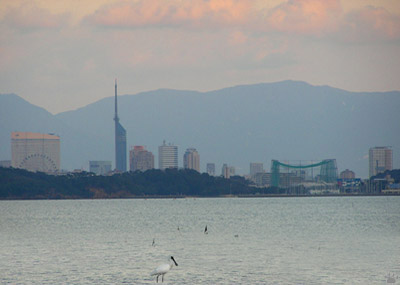
Black-faced spoonbill (Platalea minor) and Fukuoka City at sunset, Imazu, Kyushu.
Part 12. Kyushu
Kyushu is the southernmost of the main Japanese Islands, so in winter visiting it makes a nice break from cold and snow - at least as long as you stay in the coastal lowlands.
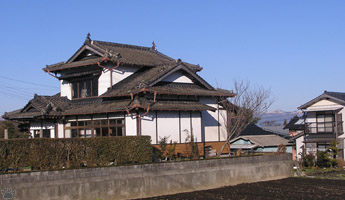 |
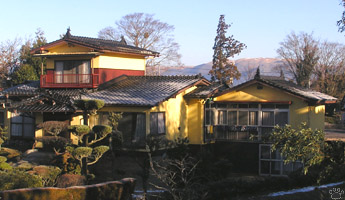 |
| Typical countryside houses, Aso, Kyushu. |
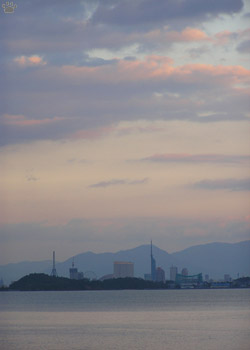
Evening near Fukuoka, Kyushu. |
It's always been kind of a gateway: the ancestors of the Japanese people have possibly first landed here, and Chinese influence has always been strong. Even now, it's the only place in the country where announcements in shinkansen trains are repeated not only in English, but also in Chinese. Fortifications against Mongol invasions can still be seen near Fukuoka. Despite being rich in history, local cities have a very modern look. Smaller towns are also modern, but houses are as lovely as anywhere in Japan.
|
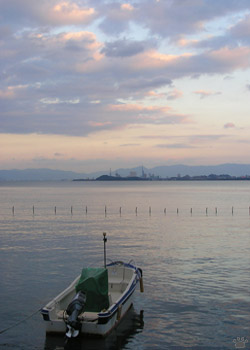
Evening near Fukuoka, Kyushu. |
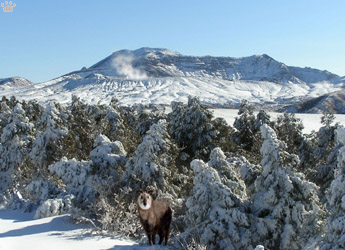
Japanese serow (Nemorhaedus crispus), Aso-san, Kyushu. |

The central highlands of Aso Caldera, Kyushu. |
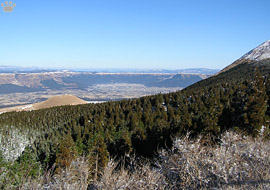
View of the caldera rim from Aso-san. |
Kyushu has many active volcanoes and Aso - the world's largest active caldera, more than 40 km across. Inside Aso are towns, highways, railroads, and a volcanic range called Aso-san with a hot lake in one of craters.
|

One of smaller inner cones, Aso Caldera. |
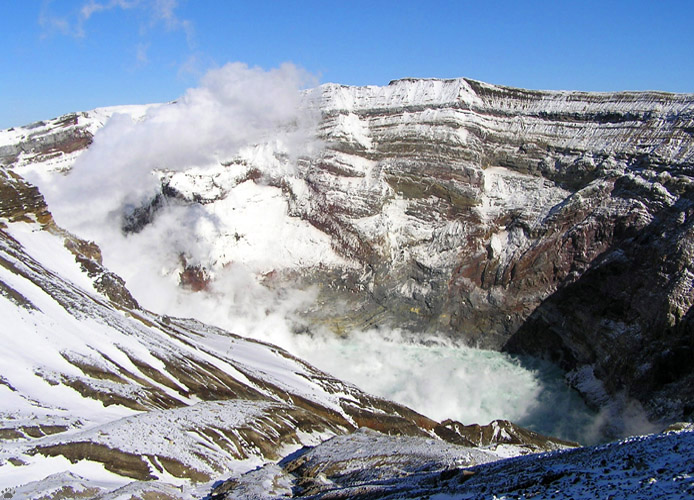
The active crater of Aso. Note yellow sulfur deposits on the crater wall. |
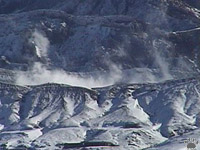
Active crater, Aso-san. |
The higher elevations of Aso-san look like an island of the Arctic in the center of a subtropical island. Forests on the slopes have a small population of kamoshika (Japanese serows), elusive mountain antelopes related to gorals. There are also foxes, hares and weasels, but all are difficult to see unless you have time and clothing for snow tracking.
|
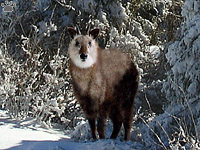
Japanese serow, Aso-san, Kyushu. |
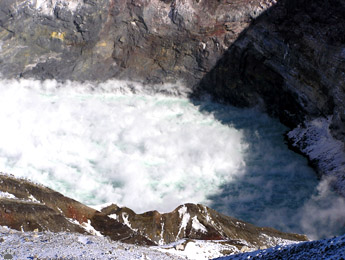 |
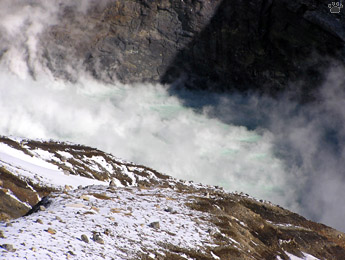 |
| Hot lake in the active crater, Aso-san. |
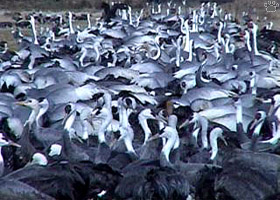
Hooded (Grus monachus, darker) and white-necked (G. vipio,
in the background) cranes, Arasaki, Kyushu. |
The most unique place on Kyushu isn't mentioned in most guidebooks. Every fall, thousands of cranes come to winter in the fields around Arasaki, a small village near Izumi City. |
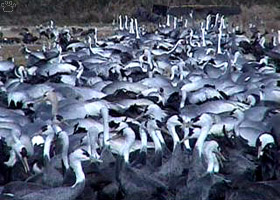
Hooded and white-necked cranes,
Arasaki, Kyushu. |
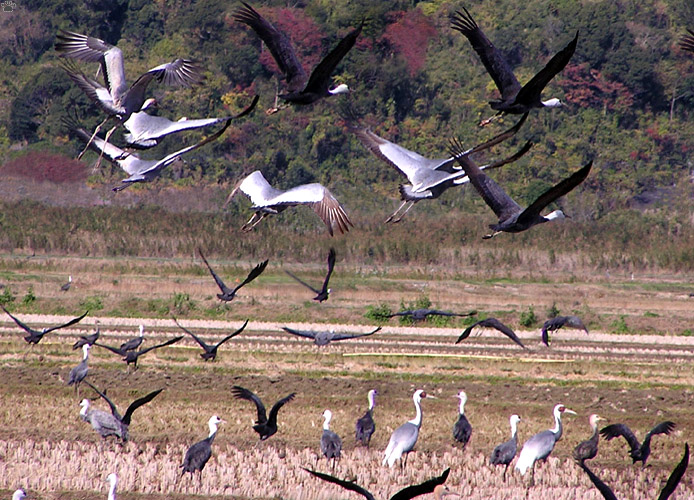
White-necked and hooded cranes, Arasaki, Kyushu. |
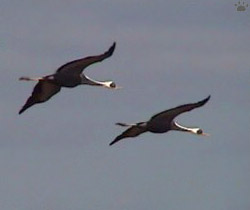
White-necked cranes, Arasaki. |
The regular visitors are eight thousand hooded cranes coming from from the larch bogs of Eastern Siberia, and two thousand white-necked cranes from the grasslands of Eastern Mongolia and Amur Valley. A few cranes of 3-4 other species show up on most years.
|
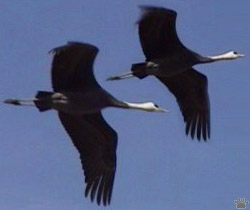
Hooded cranes, Arasaki. |
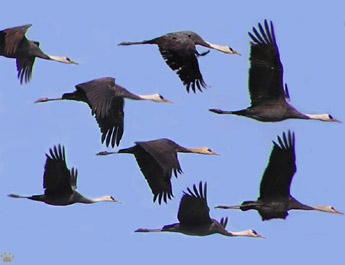
Hooded cranes, Arasaki. |
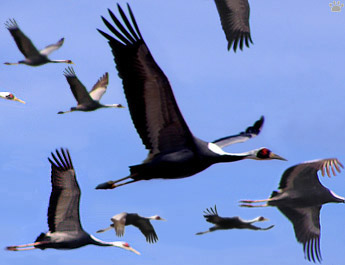
White-necked cranes, Arasaki. |
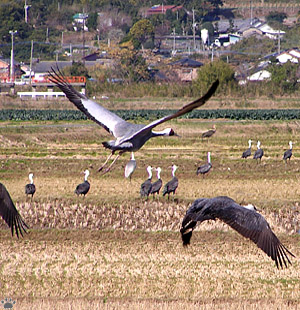
White-necked and hooded cranes, Arasaki. |
Many other interesting birds breed and/or winter at Arasaki. There are even two species of very beautiful pheasants, but I've only seen them from passing train, hence no photos for now. |
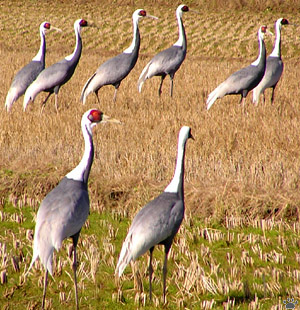
White-necked cranes, Arasaki. |
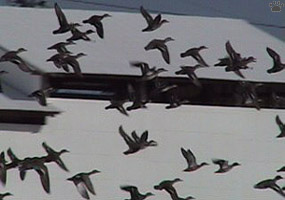
Common teals (Anas crecca), Arasaki. |

Blue rock-thrush (Monticola
solitarius), Arasaki. |

Common teals, Arasaki. |
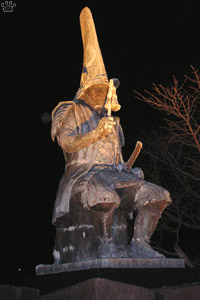
Kato Kiyomasa statue, Kumamoto, Kyushu. |
I didn't have enough time to explore Kyushu thoroughly, and had to leave Shikoku and smaller islands for my future trips.

Kagoshima city and Sakurajima volcano, Kyushu.
Of Kyushu cities, I liked Kumamoto the most. Miyamoto Musashi had spent the last years of his life there. It is a lively city with great castle. |
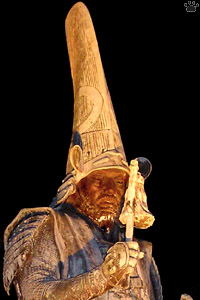
Detail of Kato Kiyomasa statue, Kumamoto. |
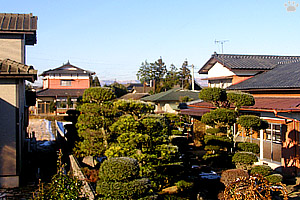
Aso town, Kyushu. |
Part 13: Japanese Castles
Back to Part 11
Home
|